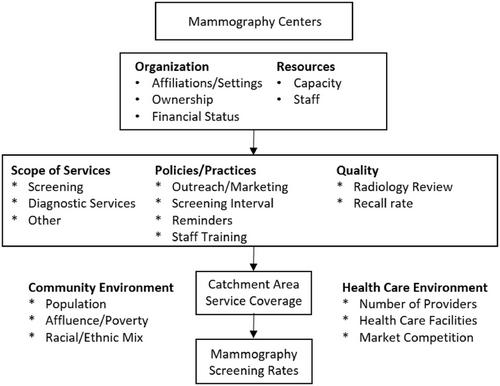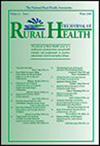The Breast-Imaging Operations, Practices and Systems Inventory: A framework to examine mammography facility effects on screening in rural communities
Abstract
Purpose
Develop and test a measurement framework of mammogram facility resources, policies, and practices in Appalachia.
Methods
Survey items describing 7 domains of imaging facility qualities were developed and tested in the Appalachian regions of Kentucky, Ohio, Pennsylvania, Virginia, and West Virginia. Medicare claims data (2016-2018) were obtained on catchment area mammogram services. Construct validity was examined from associations with facility affiliation, community characteristics, mammogram screening uptake, and market reach. Analyses were performed with t-tests and ANOVA.
Results
A total of 192 (of 377) sites completed the survey. Five factors were initially selected in exploratory factor analysis (FA) and refined in confirmatory FA: capacity, outreach & marketing, operational support, radiology review (NNFI = .94, GFI = 0.93), and diagnostic services (NNFI = 1.00, GFI = 0.99). Imaging capacity and diagnostic services were associated with screening uptake, with capacity strongly associated with catchment area demographic and economic characteristics. Imaging facilities in economically affluent versus poorer areas belong to larger health systems and have significantly more resources (P < .001). Facilities in economically distressed locations in Appalachia rely more heavily on outreach activities (P < .001). Higher facility capacity was significantly associated (P < .05) with larger catchment area size (median split: 48.5 vs 51.6), mammogram market share (47.4 vs 52.7), and screening uptake (47.6 vs 52.4).
Conclusions
A set of 18 items assessing breast imaging services and facility characteristics was obtained, representing policies and practices related to a facility's catchment area size, market share, and mammogram screening uptake.


 求助内容:
求助内容: 应助结果提醒方式:
应助结果提醒方式:


